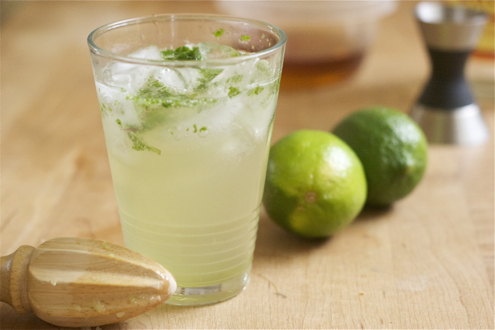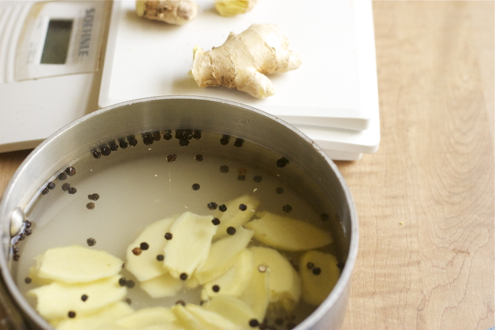I think everybody has a dream dessert. Some people have several. Buttermilk panna cotta with caramelized sugar and sectioned blood oranges is my very favorite. I also love Roasted Clementine and Chocolate Tart. On my birthday though, what I really want is cake. On their birthdays, my kids can invent whatever cake they want, anything, and I will try to make it. Siri loves chocolate cake with white chocolate peppermint ganache filling and elaborate fondant decorations. Alistair likes a moist vanilla cake with milk chocolate frosting. Make no mistake, I will not forget that it needs to be moist and milk chocolate. And Leo, who’s only 4, just wants a volcano cake that actually erupts. (I’m working on it and if you have any ideas on how make it erupt and also edible I would love to hear about it.)
Of course every year, I have every intention of making Martin an incredible birthday dessert extravaganza, but on the past few birthdays, I have to admit, he’s been short changed, at least by my standards. Last year I convinced him that what he really wanted was a Meyer lemon curd tart with a macadamia nut crust. I am sure there is no one on the planet who is crying for Martin, who did not suffer in the least eating that tart. The truth is though, I got really busy with the three kids and the dog and a bunch of school commitments, so I used a tart shell I had in the deep freezer left over from the holidays and the Meyer lemons I had in the bottom of the refrigerator. I was looking for some excuse to use them up and I didn’t have the energy to get creative. It felt a little shabby. I tried not to think about the fact that Martin is not really a lemon kind of guy.
This year, the day before his birthday, I was still scrambling for ideas. I looked at recipes on the Fine Cooking website and found one I thought might work. Then I consulted my favorite dessert cookbook. I made mental lists of ingredients I know he loves (chocolate, caramel, hazelnuts, orange rind) and tried to invent a dessert on the fly. Too much at the last minute. I texted him from the grocery store:
Walnut Cake?! Chocolate!? At store need ideas for direction…cheesecake?!
He texted me back:
Chocolate please. Or fun cheesecake.
This is me again:
How about Chocolate Caramel Cinnamon Ganache?
And he says:
Yum.
I wasn’t too sure about the cinnamon. The only place I really like it is in my Granny’s Rice Pudding. I don’t even use it in apple pie! Martin didn’t give me too much to go on though, so I went ahead. It turns out, there’s just a whiff of cinnamon – and it’s perfect. This is a truly wonderful cake!
Cinnamon Caramel Ganache Layer Cake
from Alice Medrich, published in Fine Cooking
I took this recipe straight from their website and I wouldn’t change a single thing – except maybe the name. I feel that the name calls too much attention to the cinnamon when this cake is really all about chocolate caramel flavors. You can make the filling a day ahead of time and I would imagine the cakes too, if you keep them well wrapped over night. The frosting needs to be made the day you assemble the cake or it will be too stiff to spread.
For the Filling:
- 2 cups heavy cream
- 3-inch cinnamon stick, lightly crushed
- 1/4 tsp. table salt
- 4-1/2 oz. semisweet chocolate (up to 62% cacao), coarsely chopped
- 1/2 cup granulated sugar
- 6 oz. bittersweet chocolate (70% or 72% cacao), chopped medium fine
- 2 oz. (4 Tbs.) unsalted butter, cut into 4 pieces
- 1 Tbs. light corn syrup
- Pinch table salt
- 1-1/2 oz. (1/2 cup) unsweetened natural cocoa powder
- 1/2 cup buttermilk, at room temperature
- 6 oz. (1-1/2 cups) cake flour
- 3/4 tsp. baking soda
- 1/4 tsp. table salt
- 4 oz. (8 Tbs.) slightly softened unsalted butter, cut into 4 pieces
- 1 cup granulated sugar
- 1/2 cup packed light brown sugar
- 2 large eggs, lightly beaten and at room temperature
- Easy Bittersweet Chocolate Shards, for garnish (optional)
- In a medium saucepan, bring the cream, cinnamon, salt, and 2 Tbs. water to a simmer over medium-high heat. Off the heat, cover and steep for 15 minutes.
- Put the chocolate in a medium bowl and set a fine strainer over it.
- Pour 1/4 cup water into a heavy-duty 3-quart saucepan. Pour the sugar in the center of the pan and pat it down until evenly moistened (there should be clear water all around the sugar).
- Cover the pan and cook over medium-high heat until the sugar dissolves, 2 to 4 minutes. Uncover and cook without stirring until the syrup begins to color slightly, about 1 minute. Reduce the heat to medium and continue to cook, swirling the pot gently if the syrup colors unevenly.When the caramel turns reddish amber, 1 to 2 minutes longer, take the pan off the heat and immediately stir in the cream mixture.
- Simmer over low heat, stirring constantly, until the caramel is completely dissolved, 1 to 3 minutes.
- Pour the caramel cream through the strainer onto the chocolate and discard the cinnamon. Whisk until the chocolate melts and the mixture is smooth.
- Scrape into a wide, shallow bowl, cover loosely, and refrigerate until thoroughly chilled, at least 4 hours and up to 3 days.
- Put the chocolate, butter, corn syrup, and salt in a heatproof bowl set in a skillet of barely simmering water.
- Stir gently until the chocolate melts and the mixture is perfectly smooth.
- Off the heat, stir in 6 Tbs. cool water.
- Let cool and thicken at room temperature without stirring for at least 3 hours. The consistency should be like chocolate pudding.
- Line the bottoms of three 9×2-inch round cake pans with parchment.
- Position a rack in the lower third of the oven if the three pans will fit on it. Otherwise, position racks in the upper and lower thirds of the oven.
- Heat the oven to 350°F.
- In a small bowl, whisk the cocoa and 1/2 cup lukewarm water.
- In a liquid measuring cup, mix the buttermilk with 1/2 cup cool water.
- In a medium bowl, whisk the flour, baking soda, and salt and sift them three times onto a sheet of parchment.
- In a stand mixer fitted with the paddle attachment, beat the butter on medium speed until creamy, about 15 seconds.
- Add the sugars gradually, beating until the mixture lightens in color and appears sandy but fluffy, about 5 minutes total.
- Dribble the eggs in a little at a time, taking a full minute to add them. Continue to beat for a few seconds until the mixture is smooth and fluffy.
- Stop the mixer and add the cocoa mixture. Beat on medium speed just until combined.
- Stop the mixer and, using the parchment as a chute, add about one-quarter of the flour. Mix on low speed just until incorporated.
- Stop the mixer and add one-third of the buttermilk. Mix just until blended.
- Repeat, stopping the mixer between additions and scraping the bowl as necessary, until the remaining flour and buttermilk are mixed in.
- Divide the batter evenly among the pans.
- Bake until a toothpick inserted in the center of each cake comes out clean, 17 to 20 minutes (if baking on two levels, rotate the upper and lower pans halfway through baking).
- Cool the cakes on racks for 5 minutes and then turn onto the racks, remove the parchment, and cool completely.
- Beat the chilled filling in a stand mixer fitted with the paddle attachment at medium speed until it’s very thick and stiff enough to hold a shape but still spreadable, 1 to 2 minutes. Don’t over beat.
- Put a cake layer upside down on a cardboard cake circle or tart pan bottom.
- Spread half of the filling evenly all the way to the edge of the layer.
- Top with a second upside-down layer and gently press in place.
- Spread with the remaining filling.
- Top with the third layer, again upside down. Smooth any filling protruding from the sides.
- With an offset spatula, spread a very thin layer (about 1/2 cup) of frosting evenly over the top and sides of the assembled cake to smooth the surface, glue on crumbs, and fill cracks. (Stirring the frosting more than necessary dulls the finish and makes it set up too hard.)
- Spread the remaining frosting all over the top and sides of the cake, swirling the surface with the spatula if desireTop with the chocolate shards (if using) and serve at room temperature.































